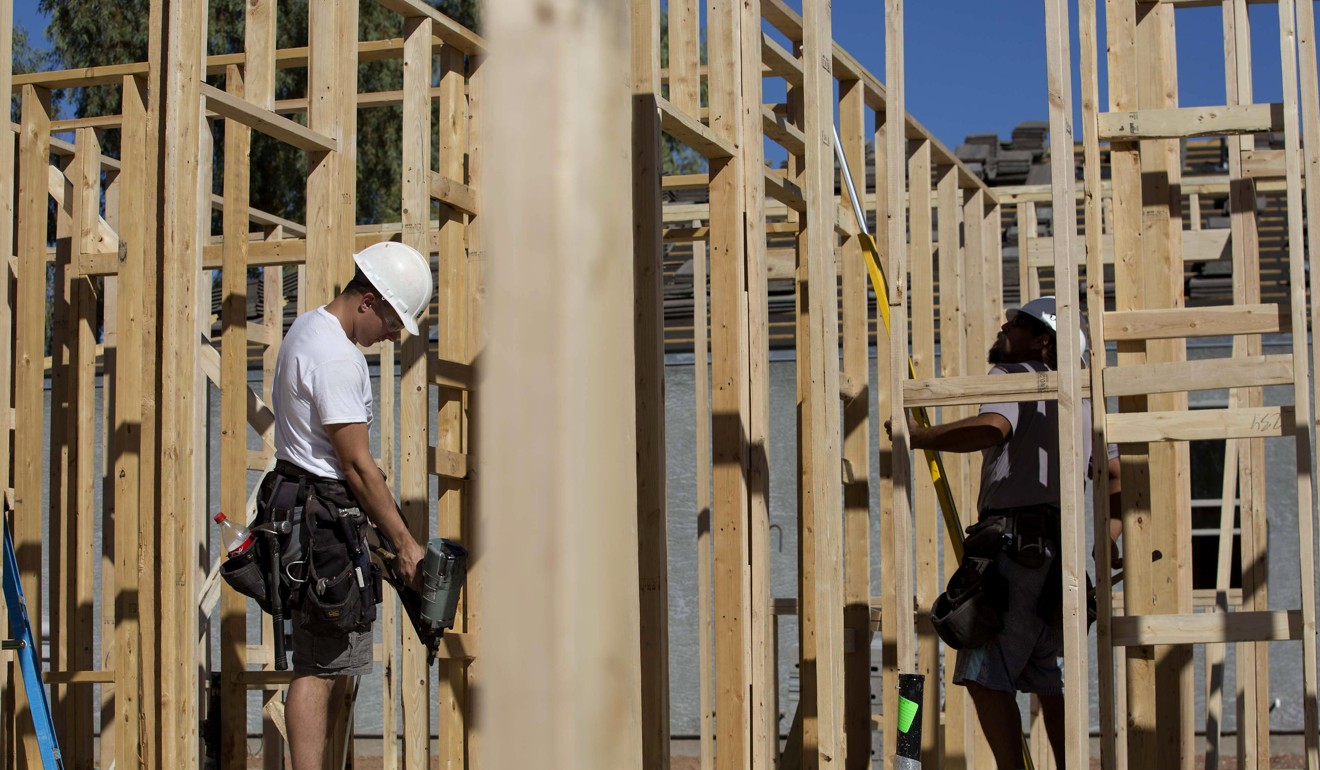
US new home sales rise to 10-year high because of tight supplies of land and labour shortages
Sales of new US single-family homes unexpectedly rose in October to hit a 10-year high amid robust demand across the country, offering a boost to the housing market.
The upbeat report from the Commerce Department on Monday was the latest indication that housing was regaining momentum after treading water for much of the year because of a dearth of homes for sale and shortages of labour and suitable land for building. It underscored the economy’s strength early in the fourth quarter.
“New home sales are a leading indicator and the jump in October sales are leading the economy higher as we finish out the year,” said Chris Rupkey, chief economist at MUFG in New York. “You have to be very confident to make the biggest big-ticket purchase of your life.”
The Commerce Department said new home sales increased 6.2 per cent to a seasonally adjusted annual rate of 685,000 units in October, the highest level since October 2007. September’s sales pace was revised down to 645,000 units from the previously reported 667,000 units.
Economists had forecast new home sales, which account for 11 per cent of overall home sales, falling 6.0 per cent to a pace of 625,000 units last month. Sales surged 18.7 per cent on a year-on-year basis in October.

New home sales, which have now increased for three straight months, added to strong homebuilding and existing home sales data in painting a positive picture of the housing market after it appeared to stall this year.
Activity was also temporarily restrained by Hurricanes Harvey and Irma. Housing has been a drag on economic growth since the second quarter. There are concerns that an effort by Republicans in the US Congress to overhaul the tax code could undermine the housing market.
Republicans in the House of Representatives have proposed allowing interest payment deductions on mortgage debt only up to US$500,000, and only on a primary residence. Their colleagues in the Senate want to keep the existing limit at US$1 million but eliminate the deduction of interest on home-equity loans.
Some economists said mild weather helped to boost new home sales last month. Sales soared 30.2 per cent in the Northeast to their highest level since October 2007. They rose 1.3 per cent in the South also to a 10-year high. Sales jumped 17.9 per cent in the Midwest and climbed 6.4 per cent in the West.

“Sales rose sharply in the Northeast and Midwest, which are the smallest regions for new home sales and often greatly influenced by atypical swings in the weather,” said Mark Vitner, a senior economist at Wells Fargo Securities in Charlotte, North Carolina.
More than two-thirds of the new homes sold last month were either under construction or yet to be started. The inventory of new homes on the market increased 1.4 per cent to 282,000 units, the highest level since May 2009. Houses under construction or yet to be started accounted for about 77 per cent of the inventory last month.
At October’s brisk sales pace it would take 4.9 months to clear the supply of houses on the market, the fewest since July 2016 and down from 5.2 months in September. A six-month supply is viewed as a healthy balance between supply and demand.
“The market is starving for affordable new homes, and builders cannot and will not ignore this hungry market,” said Svenja Gudell, chief economist at Zillow.
“Land, labour and lumber prices are only expected to keep rising, which will force those builders looking to meet market demand to search for less expensive development options farther away from urban job cores.”

